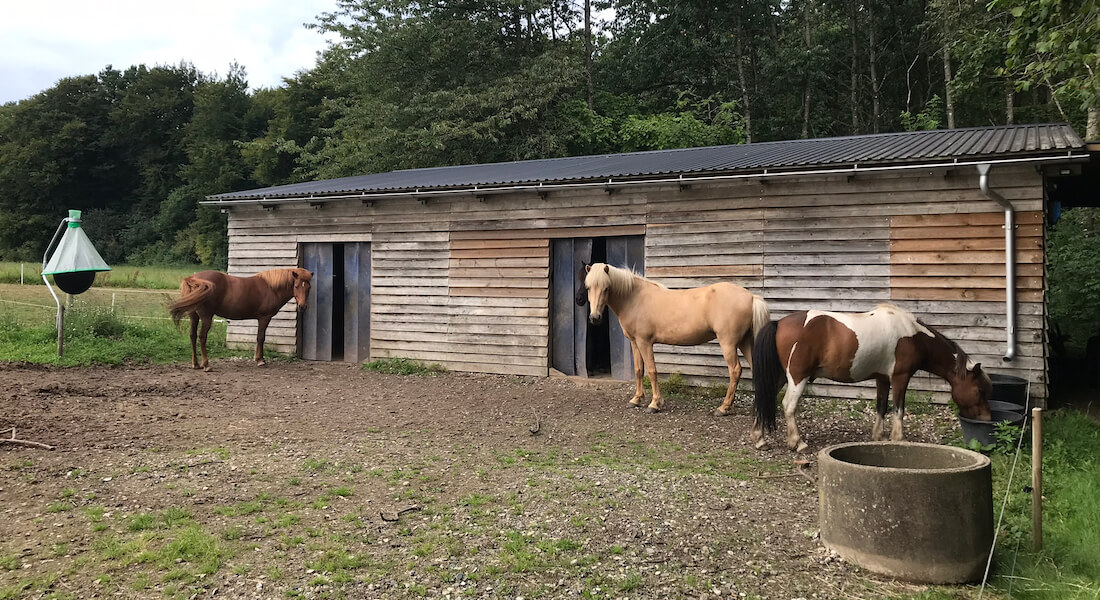Shelter use by horses during summer in relation to weather conditions and horsefly (Tabanidae) prevalence

Christensen, J.W., Andersen, A.G., Skovbo, K.N., & Skovgård, H. (2022)
Applied Animal Behaviour Science. Elsevier
Abstract
National legislation requires shelter access for horses kept outside during winter, whereas there are no requirements for shelter access to provide shade and a refuge from biting insects during summer. This study investigated use of artificial shelters by 10 horse groups continuously for eight summer weeks (2019: 5 groups, 2020: 5 groups, n = 42, 3 – 5 horses per group). Shelter use was recorded every 30 min, using wildlife cameras mounted inside the shelters, i.e., 48 recordings per day for 56 days (a total of 2688 recordings per group where each horse inside the shelter was identified and its behaviour noted). Daily weather conditions were recorded, and horsefly (Tabanidae) prevalence was quantified one day per week using H-traps (i.e. eight trap catches per group). The groups represented a variety of compositions (horse breed, age, gender) and shelter types (design, size). Across all groups and shelter types, shelter use increased on warmer days and the daily rhythm of shelter-seeking behaviour changed; on warmer days, shelter-seeking increased significantly during the day, whereas night-time use was unaffected. Further, significantly more horses were inside on days with the highest trap catch of horseflies compared to days with the lowest catch. We conclude that regardless of group composition and shelter type, horses make increased use of artificial shelters on warm summer days. Since all horses had access to natural shade in their pastures and shelter temperatures were generally higher than outdoor temperatures, we suggest that the increased shelter use on warm summer days was related to nuisance from biting insects. This is
supported by the higher shelter use on days with a high horsefly catch. We recommend provision of shelter access to horses kept on summer pastures with limited opportunities to seek natural refuge from biting insects.
